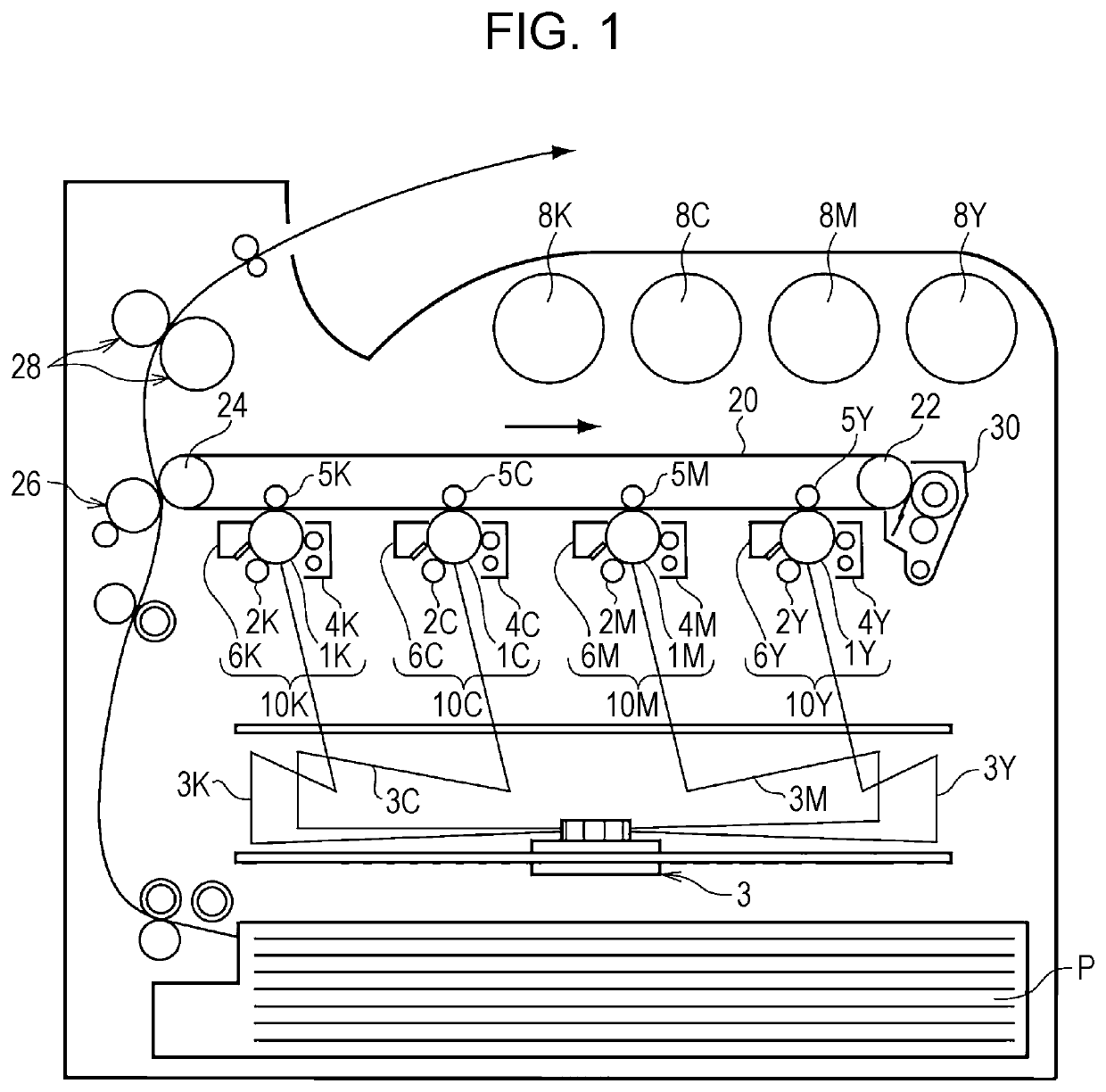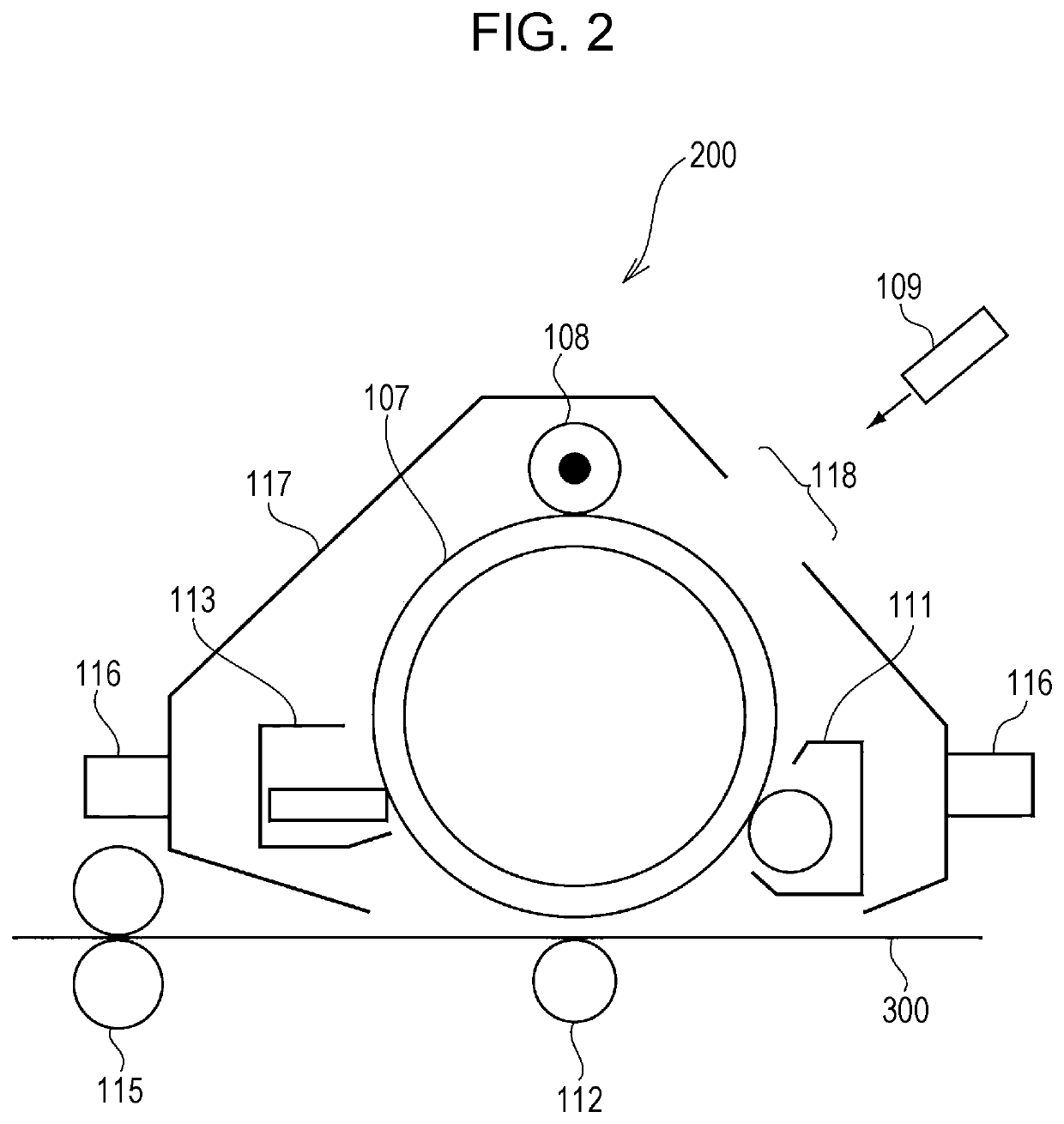Resin particle
- Summary
- Abstract
- Description
- Claims
- Application Information
AI Technical Summary
Benefits of technology
Problems solved by technology
Method used
Image
Examples
example 1
on-Coalescence Method
Preparation of Fluorescent Colorant Particle Dispersion (1)
[0274]Fluorescent colorant (Basic Red 1): 70 parts[0275]Anionic surfactant (manufactured by DKS Co. Ltd., Neogen RK): 30 parts[0276]Ion-exchange water: 200 parts
[0277]The above materials are mixed and dispersed for 10 minutes by using a homogenizer (ULTRA-TURRAX T50, manufactured by IKA). Ion-exchange water is added such that the resulting dispersion has a solid content of 20% by mass to obtain a fluorescent colorant particle dispersion (1) in which colorant particles having a volume-average particle size of 140 nm are dispersed.
Preparation of Color Pigment Particle Dispersion (1)
[0278]Color pigment (C.I. Pigment Violet 19): 70 parts[0279]Anionic surfactant (manufactured by DKS Co. Ltd., Neogen RK): 30 parts[0280]Ion-exchange water: 200 parts
[0281]The above materials are mixed and dispersed for 10 minutes by using a homogenizer (ULTRA-TURRAX T50, manufactured by IKA). Ion-exchange water is added such tha...
example 2
Pulverization Method
[0305]Linear polyester resin (linear amorphous polyester resin obtained from terephthalic acid / ethylene oxide adduct of bisphenol A / cyclohexanedimethanol: Tg=62° C., Mn=4,000, Mw=35,000, acid value=12 mgKOH / g, hydroxyl value=25 mgKOH / g): 88.1 parts[0306]Fluorescent colorant pigment (Basic Red 1): 1.00 part[0307]Color pigment (C.I. Pigment Violet 19): 0.90 part[0308]Wax A (stearyl behenate, endotherm onset temperature: 47° C., melt viscosity at 120° C.: 50 mPa·s): 5 parts[0309]Copolymerization petroleum resin (A) (C5-petroleum fraction (isoprene) / C5-petroleum fraction (piperylene) / isopropenyltoluene=monomer weight ratio (1.5 / 1.5 / 97), softening point: 125° C.): 5 parts
[0310]A mixture of the above materials is kneaded with an extruder, and the resulting kneaded product is pulverized with a surface pulverization-type pulverizer. The pulverized product is then classified into fine particles and coarse particles with an air classifier. Thus, toner particles having a vo...
example 39
ryl-EA Method
Preparation of Styrene-Acrylic Resin Particle Dispersion
[0314]Styrene: 308 parts[0315]n-Butyl acrylate: 100 parts[0316]Acrylic acid: 4 parts[0317]Dodecanethiol: 6 parts[0318]Propanediol diacrylate: 1.5 parts
[0319]The above components are mixed and dissolved, and the dissolved mixture is added to an aqueous solution in which 4 parts of an anionic surfactant (manufactured by DKS Co. Ltd., Neogen SC) is dissolved in 550 parts of ion-exchange water, and emulsified in a flask. Subsequently, while the resulting emulsion is mixed for 10 minutes, an aqueous solution in which 6 parts of ammonium persulfate is dissolved in 100 parts of ion-exchange water is added to the emulsion. After the inside of the flask is purged with nitrogen, the flask is heated in an oil bath until the temperature of the content in the flask reaches 75° C. while the content is stirred, and, in this state, emulsion polymerization is continued for 5 hours. As a result, a styrene-acrylic resin particle disp...
PUM
| Property | Measurement | Unit |
|---|---|---|
| Percent by mass | aaaaa | aaaaa |
| Percent by mass | aaaaa | aaaaa |
| Percent by mass | aaaaa | aaaaa |
Abstract
Description
Claims
Application Information
 Login to view more
Login to view more - R&D Engineer
- R&D Manager
- IP Professional
- Industry Leading Data Capabilities
- Powerful AI technology
- Patent DNA Extraction
Browse by: Latest US Patents, China's latest patents, Technical Efficacy Thesaurus, Application Domain, Technology Topic.
© 2024 PatSnap. All rights reserved.Legal|Privacy policy|Modern Slavery Act Transparency Statement|Sitemap


